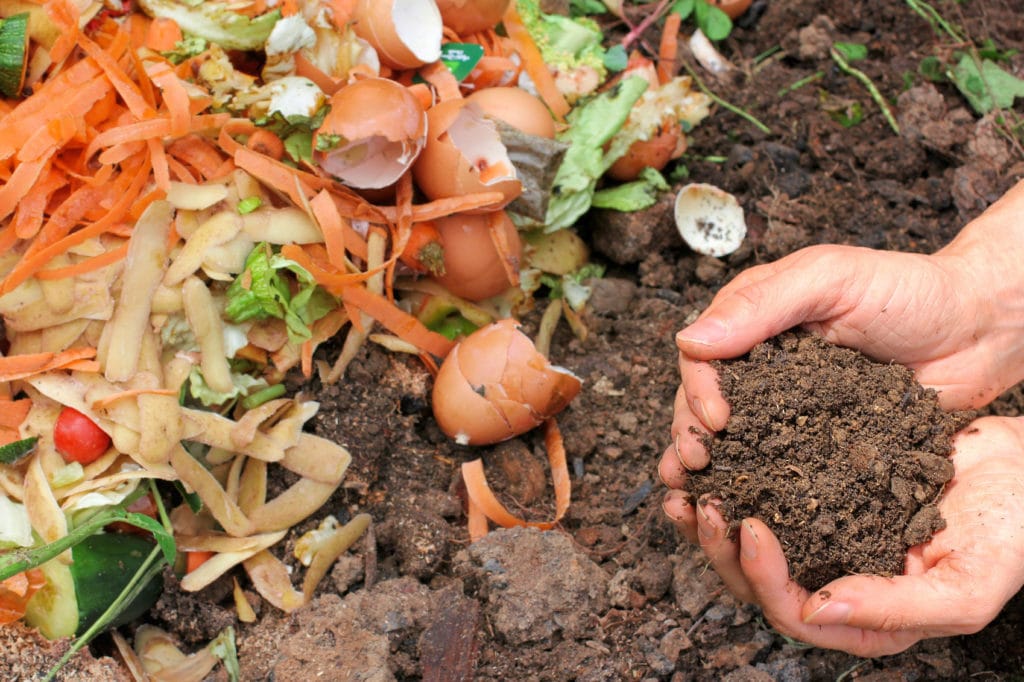Tips/Articles,
8 Tips for an Eco-Friendly Garden
Mar 23 2017
1. Use a Lead-free hose
You read that correctly. Most garden hoses contain lead. It is used as a stabilizer in the brass coupling and to make hoses supple and more durable. Take a look at the back of the packaging on a hose, you’ll notice a warning advising to never drink from it. Some say not to let the hose lay out in the sun and bring it indoors after each use (to reduce the amount of lead and other chemicals leaching). Practical advice, right? Luckily, lead-free garden hoses are becoming more common.
If you need to upgrade your hose this spring, look for labels such as “Lead-free” and “Drinking Water Safe”. Make sure “lead-free” applies to the whole hose (not just the couplings) and avoid anti-bacterial chemicals such as triclosan (often listed as “Microban”). Check out this consumer hose guide for more advice. One good option are Water Right Hoses.
2. Support Native Pollinators
Support those native pollinators that help keep your garden looking so lovely. Pollinators are responsible for 1 out of every 3 bites of food we eat but many of them are facing threats due to loss of habitat. Grow plants that will flower early and late in the season – critical times for our pollinators, such as the monarch and native bees. Check out this guide for prairie states from the Pollinator Partnership for some specific plant ideas. For some more quick tips, check out the USDA’s Gardening for Pollinators page. Already there? Register your garden with the million pollinator garden challenge.
Note: An NRDC report found pesticides harmful to bees were in many bee-friendly plants sold at garden centers. Be mindful when you shop!

3. Plant Natives
Native plants are essential for the survival of some of our pollinators. A well-known example is milkweed and monarchs. Not only do natives help our pollinators but due to their deep roots, they require less watering and reduce flooding. Because they evolved here, native plants require less maintenance and are more resilient against weeds and pests. A study by Cornell University scientists even found that native plants grown around farm fields helped manage pests and increase yields. Check out the planting guide from tip 2 (above), or learn from locals who successfully garden with natives through the Greater DuPage Wild Ones.
4. Avoid Pesticides & Herbicides
Pesticides and herbicides can harm people, pets, and wildlife. It can get into water and on our food and has been linked to childhood cancer, asthma and more. Further, many American homeowners use more chemicals per square foot on their lawns than farmers use on their fields! Planting a diverse garden with natives helps to reduce the need for pesticides by attracting beneficial insects. There are natural alternatives as well such as compost. Take action with more advice and tools from the Midwest Pesticide Action Center.
5. Install a Rain Barrel
Rain barrels collect water from your roof during rain storms and store that water for use in your garden. There are so many benefits. First of all, it’s free water! It’s also chlorine-free, unlike municipal water from the tap. Chlorine is essentially mild bleach and kills microbes – not good for our plants or soil microbes. Rain barrels also help reduce flooding by capturing that rainwater during storms. The options are almost endless too. You can DIY one, get creative and paint a basic rain barrel, or buy one to match your home’s style. Win-win-win.
6. Use a Rain Gauge
Be water-wise! Most lawns only need about 1-1.5 inches of water each week. Get yourself a rain gauge to avoid wasting water on your not-so-thirsty lawn or garden. Other good practices include watering in the early morning to reduce evaporation, setting a timer to avoid accidentally overwatering, and not cutting your grass too short. Lastly, make sure you only water what grows – your sidewalk is a-okay without a soaking. Check out more tips from the Chicago Botanic Garden.
7. Plant Edibles in Raised Beds or Pots
Urban and suburban soils can contain unhealthy contaminants such as lead. To protect your health, avoid growing plants you plan to eat directly in your soil. Instead use containers or raised beds lined with landscape fabric and filled with uncontaminated soil purchased elsewhere. If you want data, you can have a soil test done to measure the levels of contaminants present. Follow the next tip to improve the health of your soil further..
8. Compost – Make It, Use It
Last but not least, compost your garden trimmings, fall leaves, and food scraps. In Illinois, it is actually illegal to send yard waste to landfills. Organic waste in landfills contributes to methane emissions and leachate production which both negatively impact our planet. If you compost in your backyard, you’ll get free, natural fertilizer rich in nutrients and reduce your garbage bill. Using compost on your lawn and in your garden not only supplies nutrients – it’s also proven to help the soil retain water, reduces erosion, and “cleans” less than pristine soils. Compost dilutes contaminants and binds them to soil, reducing the risk of human exposure (more on that here).

Kick off the growing season at our annual Get Your Garden Growin’ Green Market on Saturday, May 6th 2017.
Buy compost, local and organically raised seedlings, learn how to help bees, compost at home and more!
Bonus Links
- Pollinator Partnership – Eco-Regional Planting Guides for Pollinator Friendly Greenspaces
- Grow It! Gardening App – developed locally
- Xerces Society Fact Sheets
- Study: With proper care, contaminated urban soils are safe for gardening
- Urban Gardening: Managing the Risks of Contaminated Soil – Environmental Health Perspectives
